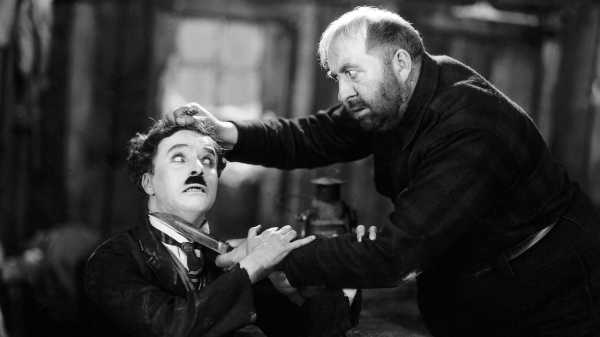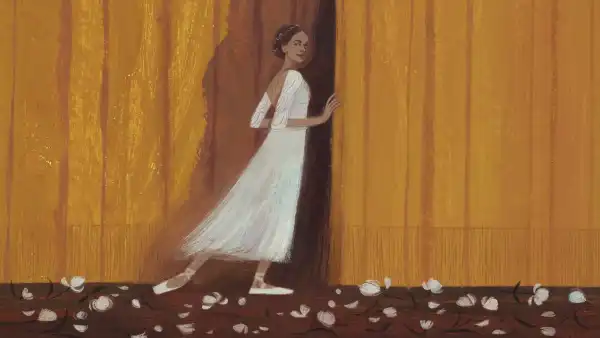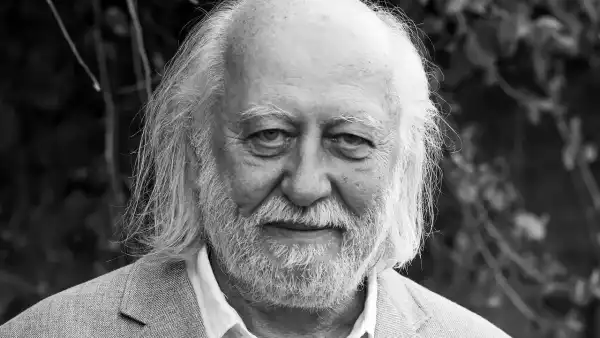
Save this storySave this storySave this storySave this story
Film criticism at The New Yorker started with a bang: the first movie reviewed in the first issue, dated February 21, 1925, was the German director F. W. Murnau’s “The Last Laugh,” a remarkable drama of working life which I consider one of the ten greatest films in the history of cinema. The magazine’s reviewer immediately recognized Murnau’s movie as “a superb adventure into new phases of film direction,” adding, “We have never seen the camera made so pliable to moods and moments.” The judgment was notably forward-looking and turned out to be exemplary. Its passionate discernment and its attention to developments in the art of cinema—and, especially, to direction—set the tone for the magazine’s illustrious inaugural year of film criticism.
This first reviewer published under the name Will Hays (or Hayes), Jr. Although the name is apparently real, there’s a bitter comedy to it, given that the better-known Will Hays, Sr. (apparently unrelated), was Hollywood’s morality czar, responsible for the censorship guidelines that ultimately became known as the Hays Code. In 1924, Hays, Sr., had issued an early version of his strictures, and Hays, Jr., wrote mockingly of him. Much of Hays, Jr.,’s signed work, appearing in the magazine’s first four issues, involved not reviews but inconsequential movie-world anecdotes. (“ ‘Well, spell me a big word,’ commanded the producer.”) Then the movies column dropped out for a week; when it resumed it was both unsigned and gossipy, dripping with contempt for the censorious Hays, Sr.: “This is to be comedy year in the world of celluloidia. The public is tired of sex in pictures, Will Hays says, and sex is to be eliminated.” The column also took happy note of Murnau’s planned move to Hollywood and included a fascinating review of a film by Ernst Lubitsch, “Kiss Me Again,” which is now considered lost (and which Lubitsch remade, in 1941, as “That Uncertain Feeling”). The critic—writing on the basis of a private screening held before a release date was even announced—enthused that the movie was even better than Lubitsch’s great 1924 comedy “The Marriage Circle,” but warned, “We shudder when we consider what will be done to it by the censors of the hinterland.”
In June, a trio of movie columns, signed “F. S.” and “F. J. S.” brought criticism back, if not with inspiration then at least with intuition: the writer attended a pre-release screening (apparently in Patchogue, Long Island) of D. W. Griffith’s comedy “Sally of the Sawdust” and predicted that the movie would establish its male lead, W. C. Fields (already a stage star), as a “big screen comedian. Wait and see!” One T. S., likely Theodore Shane, took over in the following issue, of July 4th. His voice, expressive yet sardonic, emerged flamboyantly in the August 1st issue, when he revisited Lubitsch’s “Kiss Me Again” upon its release, discoursing with florid accuracy on the director’s art. “The esteemed Herr,” Shane wrote (Lubitsch had established himself in his native Germany before coming to Hollywood, three years before), “recognizes the human animal under sophisticated sex circumstances as an ignoble concoction of surly humors, strange and endless vain conceits, silly shifting appetites, and inconsiderate, selfish, cruel, and illogical desires, but holds them entirely blameless for being as human as that all the while.” Shane added, with supercilious urbanity, that the film “is as far from America as Mr. Lubitsch is above sophistication of Mr. Will H. Hays.”
Shane had a keen antenna for both the good and the great—for films that offered exciting viewing and ones that would be of enduring importance in the history of cinema. In the following issue, he reviewed the newly released “Sally of the Sawdust,” enumerating the elements of Fields’s performance that he thought immediately placed him in “that marble temple with the custard walls which harbors Chaplin, Lloyd and Keaton.” Shane wasn’t infallible, and had particular aversion to anything that he deemed sentimental. Even while enthusing about Charlie Chaplin’s comedic inventiveness in “The Gold Rush,” he complained, “Chaplin has seen fit to turn on his onion juices in a Pierrot’s endeavor to draw your tears.” Contextualizing the complaint, Shane added, “Perhaps they have elected him to an Academy and he is intellectualizing his powers. Perhaps he is getting too metaphysical about pathos.” In short, Shane preferred the early, funny stuff: “We cannot help but recall with a tinge of sadness, the old days when custard”—that is, pie-in-the-face comedy—“was young.”
That resistance to sentiment turned Shane away even from a great film that laces its frosting with bitters: Erich von Stroheim’s adaptation of “The Merry Widow.” “Mr. von Stroheim has a true German genius for morbidity, mud and ironic contrast,” Shane wrote. “He should turn from saccharine flimsiness with subtitles like ‘—beauty—love—passion—’ and do something for the adults.” While praising King Vidor’s First World War drama “The Big Parade,” in the November 28th issue, Shane inveighed against “a sentimentalist,” “sentimentality,” and a “sentimental Odyssey,” yet he enthused about Vidor’s art: “There is more hurricane movement, more seething, bursting, explosive excitement, more vigorous poetry and grim humor than has been displayed hereabouts in several blue moons of assorted screen junk.” (This column was the first to appear under a rubric that endures to this day, The Current Cinema.)
Cut to the chaser: a “List of Ten” that appeared in the December 26th issue, the last of the year. Shane boldly prefaced his picks with another list, of ten “works of literature we have greatly enjoyed in a lifetime,” each paired with a director he thought should be tapped for a movie adaptation—or, as he called it, the “transfilming.” A few examples: for Guy de Maupassant’s novel “Bel-Ami,” Stroheim; for the same author’s “Yvette,” Lubitsch; and, for Thomas Hardy’s “Mayor of Casterbridge,” the inspired choice of the Swedish director Victor Sjöström. Shane’s only stipulation was that the director “must have free rein for his genius. All the Movie Moguls may do is to stand by and hold the moneybags.” He was well aware that the proper subject of criticism is the future of the art.
As for the best movies of the year—or, as Shane put it, “the Ten Pictures which gave the least pain during the Fiscal Art Year of 1925”—the list ran as follows:
“The Last Laugh” (Murnau)
“Greed” (Stroheim)
“Forbidden Paradise” (Lubitsch)
“Kiss Me Again” (Lubitsch)
“A Regular Fellow” (A. Edward Sutherland)
“The Unholy Three” (Tod Browning)
“Lady Windermere’s Fan” (Lubitsch)
“The Pony Express” (James Cruze)
“The Gold Rush” (Chaplin)
“The Big Parade” (Vidor)
Most of these are, to put it bluntly, auteur films—the works of directors displaying original artistry within the Hollywood system. (The exceptions are “A Regular Fellow,” a vehicle for the now largely forgotten star Raymond Griffith, many of whose films are lost; “The Gold Rush,” given that Chaplin owned his own studio; and “The Last Laugh,” which Shane called “the greatest picture ever made.”) Shane and his predecessors at The New Yorker were not alone in their appreciation of directors’ art. Other notable early critics—such as Virginia Tracy, in the Tribune, and Iris Barry, in the Spectator and the Daily Mail—had a sharp eye for great directors. There was nothing odd about this notion, because the movie business was still largely centered on directors. Assembly-line production and overbearing intervention by producers weren’t yet standard practice, so it seemed self-evident that considering movies as an art form meant considering the personalized art of directors.
One paradox of Shane’s list, however, is that two of the films—“The Unholy Three” and “The Big Parade”—were produced by a man who did more than anyone else to kick the Hollywood system into high gear: Irving Thalberg. Working initially at Universal, Thalberg gradually developed methods to tailor films to the marketplace. He standardized the story conference, revised scripts, pulled the plug on shoots when he saw fit, held test screenings, recut films, and ordered copious reshoots. He asserted the producer’s authority over the director’s, and when Stroheim resisted he fired him. Indeed, another film on Shane’s list—Stroheim’s “Greed”—is arguably a Thalberg product. By then working at M-G-M, he came aboard “Greed” during the editing and, after test screenings, had the film cut from more than nine hours to about two and a half. Shane’s list thus represents both the waning era of cinematic roughriders and the coming age of sleekly standardized entertainment—of a new mainstream.
Reviews, notable though they were, weren’t the only place where The New Yorker expressed views about movies. Profiles and items in The Talk of the Town (a department that figured in the first issue) also defined the magazine’s perspective on what was happening in motion pictures. And what The New Yorker saw happening most of all was Charlie Chaplin, who figures prominently in the magazine’s first year, in contexts ranging from pithy to piffling. A Talk piece in late November related an odd anecdote about Chaplin’s erroneous effort to summon Mark Cross (as in the leather-goods firm) to work with him in Hollywood when in fact he wanted to consult with Milt Gross, the cartoonist. Other Talk pieces were similarly anecdotal: one recounted Chaplin’s peregrinations in the “crowded lanes” of the Lower East Side; another presented Chaplin and the tycoon Cornelius Vanderbilt, Jr., dressing shabbily to blend in with the down-and-outs of the Bowery and then revealing themselves to their incredulous new companions.
Most of the detailed reporting about Chaplin was focussed on the peculiar state of his reputation. Perhaps the most famous person in the world and likely the most universally beloved comedian, he was self-consciously bending his comedy toward overt seriousness and was thus hailed by intellectuals as a high artist. The October 24th issue featured a report from Paris by Genêt (i.e., Janet Flanner) about “the new Chaplin.” (“The Gold Rush” was released there on October 9th.) “People actually fought for entrance the other night at the opening,” she wrote. “Marcel Duchamp brought a whole boxful of friends and the whole crowd comically went through the ceremony of wringing out their handkerchiefs after having tried in vain to dry their tears of joy.”
In a full-page essay about Chaplin in the June 20th issue, Ben Hecht, soon to become one of Hollywood’s great screenwriters, uncorked a sparkling aphorism: “a Genius is a personage whose talents offer neutral ground on which the Intelligentsia and the Rabble may foregather and rub noses.” Yet this promising start devolved into a prime example of the sort of cynical assholery that today would be called a hot take, or even clickbait. Hecht averred that Chaplin’s sudden acclaim as an intellectual by intellectuals resulted not from anything Chaplin did onscreen but because “he was a befuddled Socialist” and because “Charlie read good books and used long words and was interested on the side in Art (in fact, in The Arts).” As for the hoi polloi, they embraced Chaplin because “the idea of a Superior Person—in fact, an Intelligentsia all by himself—devoting his energies to the entertainment of the masses aroused in them the sense of gratitude which people have for those who increase their pride.”
More substantially, and more discerningly, a Profile of Chaplin signed “Searchlight” (Waldo Frank), in the May 23rd issue, described Chaplin as uneasily besieged by an adoring crowd in Paris and yet peevish when he went unrecognized in New York. Frank portrayed Chaplin considering “it”—his fame, his success—as something unexplained: “ ‘What is it?’ he asked himself. ‘I must look out. There’s something they don’t even understand.’ ” Frank reflected:
He has not yet found out. And this is the pity of Chaplin. The gods seem to be playing a sort of serial joke on him. And he’s always behind: he’s never yet caught up. The mob . . . the fortune . . . the fame . . . the intellectuals of New York and Paris turning his stunts into logarithmic mazes as if he were Einstein . . . the great of the earth . . . mysterious, hungry women.
Chaplin himself looks to the cinema for an explanation:
I thought I knew what I was doing. I studied hard the technique of laughter-getting. I know now I never knew what I did. Really, I must start to learn the art of the motion picture.
In this remarkable piece, Frank detailed an unnamed acquaintance’s observations of the many, seemingly disparate aspects of Chaplin’s multifarious personality, and added, “Charlie Chaplin’s secret is that he has created for himself a mask in which all this gamut lives.” But Frank shared Shane’s fretfulness when it came to Chaplin’s serious turn: “He goes on seeking. And his quest slows his work, sicklies the pure lyrism of his art with a pale cast of thought.”
The first extended discussion of Chaplin in The New Yorker came in another Talk of the Town piece, from March 21st, titled “Home Problems in Hollywood,” which began, “Charlie Chaplin is in trouble again.” The piece continued, “Over his head hangs a sword that was forged in the Californian sunshine of the cold metal that entered the souls of the native sons when they lived in Kansas, Iowa and Nebraska. It is the sword of righteousness, the flaming blade of moral indignation.” The Talk story told of Chaplin’s clandestine marriage, in Mexico, to the actress Lita Grey, whom he’d cast in a leading role in “The Gold Rush”—and who, the piece said, was pregnant and supposedly due to give birth in May. Chaplin therefore replaced Grey with another actress, Georgia Hale, “necessitating the retaking of many scenes and much delay.” Meanwhile, “dark rumors were circulated as to the military nature of his wedding and Miss Grey was pictured as the childishly innocent victim of a rapacious roué.” These rumors led to calls for a boycott of Chaplin’s films and for screenings of “The Gold Rush” to be cancelled. The piece mentioned Grey’s mother and other relatives moving into the couple’s home, and financial negotiations over a divorce.
The snide discussion of the couple’s relationship, with its suggestion of gold digging on the part of Grey (or at least her mother), omitted some significant details. Chaplin agreed to marry Grey only after she told him that she was pregnant. In California, the age of consent at the time was eighteen; Grey was then sixteen, which exposed Chaplin to charges of statutory rape. The marriage was thus an attempt to legalize the relationship and avoid prosecution. (Grey, in an autobiography published posthumously, in 1998, quotes Chaplin telling his “entourage,” “Well, boys, this is better than the penitentiary but it won’t last long.” She also cited the remark in her 1927 divorce filing; Chaplin, in a response, denied saying anything of the sort.)
Waldo Frank’s Profile accurately observed that Chaplin contained multitudes and named one of his personae somewhat euphemistically: “A mad sensualist emerged, sadistic, yet possessed of a cruel love of checking himself back into intelligence.” If one reads between the lines, Chaplin comes off as a sexual predator. His films decry the cruelty of the powerful and glow with sympathy for the vulnerable; in his life, he was blind or indifferent to the effects of his willful libertinism. The New Yorker’s Talk writer was similarly blinkered and callous, treating Grey like a consenting partner and Chaplin as a dual victim, of his mother-in-law’s venality and of Middle America’s moral prejudices. In this regard, the magazine’s movie coverage was all too exemplary of Hollywood at the time, and it took nearly a century for the industry, with an assist from The New Yorker, to face up to its regime of sexual depredation. ♦
Sourse: newyorker.com







